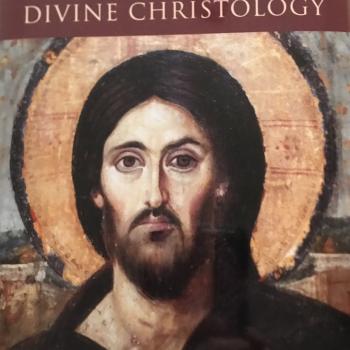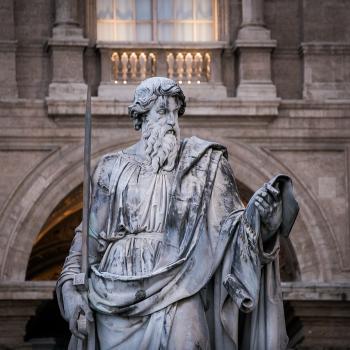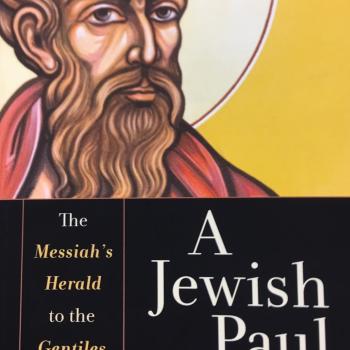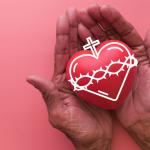As COVID-19 spikes again, and our country’s divisions deepen over what to do about the virus, a lesson from the annals of history teach us about early Christian and non-Christian reactions to plagues. The ancient Greek historian Thucydides writes a gripping description of a terrible plague that struck Athens and other city-states during the early stages of the Peloponnesian War (c. 430 BC). Eusebius of Caesarea then writes about believers and non-believers alike struck by a plague that ravaged Alexandria, Egypt during the days of Saint Dionysius the Great around the middle of the third century. 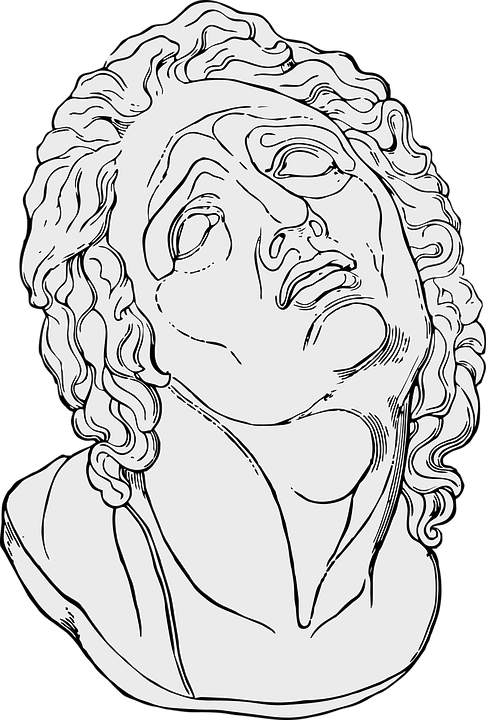
We can learn from human reactions to these two great plagues, beginning first with the one without Christians. I list a total of 10 descriptions of the plague written in Thucydides, History of the Peloponnesian War, II.47–52 (Benjamin Jowett translation):
1. Ignorance about the nature of the disease:
“For a while physicians, in ignorance of the nature of the disease, sought to apply remedies.” “As to its probable origin or the causes which might or could have produced such a disturbance of nature, every man, whether a physician or not, will give his own opinion” [The Peloponnesian War, II.47.3; 48.3].
Although Thucydides says that it came from south of Egypt, spread through Persia, and then eventually to Athens, and may be similar to an earlier disorder from Lemnos, “there is no record of such a pestilence occurring elsewhere, or of so great a destruction of human life” [II.48.1].
2. Among the first victims were the first respondents:
“…but it was in vain, and they themselves [physicians] were among the first victims, because they oftenest came into contact with it” [II.47.4].
3. No remedy, not even by religious rituals:
“No human art was of any avail, and as to supplications in temples, enquiries of oracles, and the like, they were utterly useless, and at last men were overpowered by the calamity and gave them all up” [II.47.4].
“No single remedy could be deemed a specific; for that which did good to one did harm to another. No constitution was of itself strong enough to resist or weak enough to escape the attacks; the disease carried off all alike and defied every mode of treatment” [II.51.2–3].
4. Blame was placed on opponents:
“It first attacked the inhabitants of the Piraeus, and it was supposed that the Peloponnesians had poisoned the cisterns…” [II.48.2].
5. Characteristics of the disease:
5.1 Early stages: fever, inflammation, irregular breathing, sneezing, coughing:
“Many who were in perfect health, all in a moment, and without any apparent reason, were seized with violent heats in the head and with redness and inflammation of the eyes. Internally the throat and the tongue were quickly suffused with blood, and the breath became unnatural and fetid. There followed sneezing and hoarseness; in a short time the disorder, accompanied by a violent cough, reached the chest…” [II.49:2-3].
5.2 Later stages: vomit, convulsions, bulging patches of skin, ulcers, insomnia, intense fever, perpetual thirst:
“…then fastening lower down, it would move the stomach and bring on all the vomits of bile to which physicians have ever given names; and they were very distressing. An ineffectual retching producing violent convulsions attacked most of the sufferers; some as soon as the previous symptoms had abated, others not until long afterwards. The body externally was not so very hot to the touch, nor yet pale; it was of a livid colour inclining to red, and breaking out in pustules and ulcers. But the internal fever was intense; the sufferers could not bear to have on them even the finest linen garment; they insisted on being naked, and there was nothing which they longed for more eagerly than to throw themselves into cold water. And many of those who had no one to look after them actually plunged into the cisterns, for they were tormented by unceasing thirst, which was not in the least assuaged whether they drank little or much. They could not sleep; a restlessness which was intolerable never left them” [II.49.3–6].
5.3 Final results: death by high fever for many, and death from ulcerations and diarrhea for survivors of the fever:
“While the disease was at its height the body, instead of wasting away, held out amid these sufferings in a marvellous (sic) manner, and either they died on the seventh or ninth day, not of weakness, for their strength was not exhausted, but of internal fever, which was the end of most; or, if they survived, then the disease descended into the bowels and there produced violent ulceration; severe diarrhoea (sic) at the same time set in, and at a later stage caused exhaustion, which finally with few exceptions carried them off” [II.49.6].
5.4 Survivors lost fingers, toes, genitals, eyesight, or their sanity:
“For the disorder which had originally settled in the head passed gradually through the whole body, and, if a person got over the worst, would often seize the extremities and leave its mark, attacking the privy parts and the fingers and the toes; and some escaped with the loss of these, some with the loss of their eyes. Some again had no sooner recovered than they were seized with a forgetfulness of all things and knew neither themselves nor their friends” [II.49.7–8].
5.5 Survivors became immune and could care for the sick:
“But whatever instances there may have been of such devotion, more often the sick and the dying were tended by the pitying care of those who had recovered, because they knew the course of the disease and were themselves free from apprehension. For no one was ever attacked a second time, or not with a fatal result” [II.51.6]
6. There were so many deaths that many dead bodies were not buried:
“The general character of the malady no words can describe, and the fury with which it fastened upon each sufferer was too much for human nature to endure. There was one circumstance in particular which distinguished it from ordinary diseases. The birds and animals which feed on human flesh, although so many bodies were lying unburied, either never came near them, or died if they touched them” [II.50.2].
“The dead lay as they had died, one upon another, while others hardly alive wallowed in the streets and crawled about every fountain craving for water. The temples in which they lodged were full of the corpses of those who died in them…” [II.52.2].
“…The customs which had hitherto been observed at funerals were universally violated, and they buried their dead each one as best he could. Many, having no proper appliances, because the deaths in their household had been so numerous already, lost all shame in the burial of the dead. When one man had raised a funeral pile, others would come, and throwing on their dead first, set fire to it; or when some other corpse was already burning, before they could be stopped, would throw their own dead upon it and depart” [II.52.3-4].
7. Inequality of care with some dying because they received none:
“Some of the sufferers died from want of care, others equally who were receiving the greatest attention” [II.51.1].
8. Quarantine and social abandonment:
“Appalling too was the rapidity with which men caught the infection; dying like sheep if they attended on one another; and this was the principal cause of mortality. When they were afraid to visit one another, the sufferers died in their solitude, so that many houses were empty because there had been no one left to take care of the sick; or if they ventured they perished, especially those who aspired to heroism… the very relations of the dying were at last growing weary and ceased even to make lamentations, overwhelmed by the vastness of the calamity” [II.51.3-5].
9. Lack of social distancing aggravated the problem:
“The crowding of the people out of the country into the city aggravated the misery; and the newly-arrived suffered most. For, having no houses of their own, but inhabiting in the height of summer stifling huts, the mortality among them was dreadful, and they perished in wild disorder” [II.52.1–2].
10. Without religious and legal restraints, lawlessness thrived:
“The temples in which they lodged were full of the corpses of those who died in them; for the violence of the calamity was such that men, not knowing where to turn, grew reckless of all law, human and divine…” [II.52.2-3]
“There were other and worse forms of lawlessness which the plague introduced at Athens. Men who had hitherto concealed what they took pleasure in, now grew bolder. For, seeing the sudden change,—how the rich died in a moment, and those who had nothing immediately inherited their property,—they reflected that life and riches were alike transitory, and they resolved to enjoy themselves while they could, and to think only of pleasure. Who would be willing to sacrifice himself to the law of honour when he knew not whether he would ever live to be held in honour? The pleasure of the moment and any sort of thing which conduced to it took the place both of honour and of expediency. No fear of Gods or law of man deterred a criminal. Those who saw all perishing alike, thought that the worship or neglect of the Gods made no difference. For offences against human law no punishment was to be feared; no one would live long enough to be called to account [II.53.1-4].
_____
Such was the case in Athens. We can sympathize with the deaths of first respondents, ignorance about the disease, race to find a remedy, social distancing, and quarantines. We also notice that Athenians were involved in blaming others, abandonment of religious reverence, and lawlessness (though ours more from lack of police than impending death). We now turn to the plague in Alexandria, which had a significant number of Christians living in the city, as reported by Eusebius’ Ecclesiastical History (VII.22.1–10; A. C. McGiffert translation), who receives his information from a letter written by Saint Dionysius (c. 363). Here are my 10 descriptions of that plague. 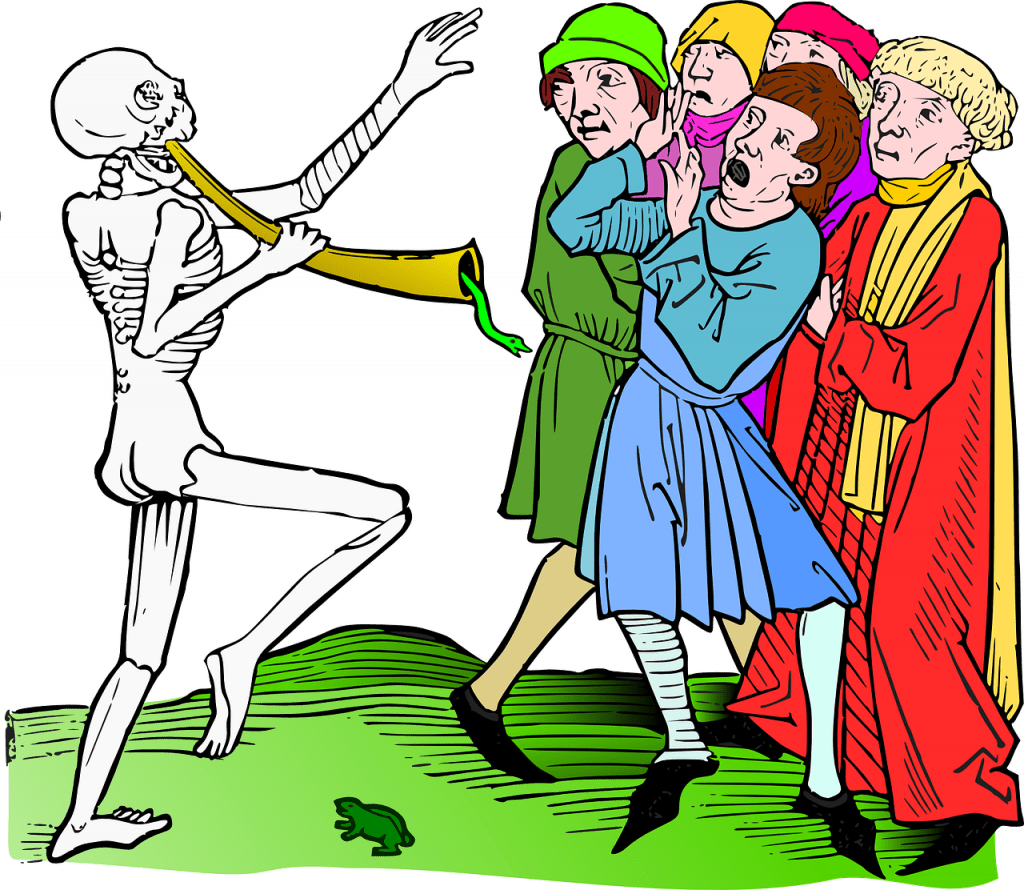
1. Great sorrow for the dead:
“Now, indeed, everything is tears and every one is mourning, and wailings resound daily through the city because of the multitude of the dead and dying. For as it was written of the firstborn of the Egyptians, so now ‘there has arisen a great cry, for there is not a house where there is not one dead’ [Exod 12:30] (VII.22.2-3).
2. Persecuted Christians were faithful in celebration:
“For many terrible things have happened already. First, they drove us out; and when alone, and persecuted, and put to death by all, even then we kept the feast [Easter]. And every place of affliction was to us a place of festival: field, desert, ship, inn, prison; but the perfected martyrs kept the most joyous festival of all, feasting in heaven” (VII.22.4).
3. Despite war and famine, Christians rejoiced:
“After these things war and famine followed, which we endured in common with the heathen. But we bore alone those things with which they afflicted us, and at the same time we experienced also the effects of what they inflicted upon and suffered from one another; and again, we rejoiced in the peace of Christ, which he gave to us alone” (VII.22.5).
4. Both Alexandrian Christians and non-Christians experienced the plague; non-Christians were overcome by dread:
“But after both we and they had enjoyed a very brief season of rest this pestilence assailed us; to them more dreadful than any dread, and more intolerable than any other calamity; and, as one of their own writers has said, the only thing which prevails over all hope. But to us this was not so, but no less than the other things was it an exercise and probation. For it did not keep aloof even from us, but the heathen it assailed more severely” (VII.22.6).
5. Christians excelled in love and kindness:
“The most of our brethren were unsparing in their exceeding love and brotherly kindness” (VII.22.7).
6. Christians visited the sick and ministered to them, even contracting the disease from them, without fear:
“They held fast to each other and visited the sick fearlessly, and ministered to them continually, serving them in Christ. And they died with them most joyfully, taking the affliction of others, and drawing the sickness from their neighbors to themselves, and willingly receiving their pains. And many who cared for the sick and gave strength to others died themselves having transferred to themselves their death” (VII.22.7).
“Truly the best of our brethren departed from life in this manner, including some presbyters and deacons and those of the people who had the highest reputation; so that this form of death, through the great piety and strong faith it exhibited, seemed to lack nothing of martyrdom” (VII.22.8).
7. Christians were involved in burial and services honoring those who died:
“And they took the body. And they took the bodies of the saints in their open hands and in their bosoms, and closed their eyes and their mouths; and they bore them away on their shoulders and laid them out; and they clung to them and embraced them; and they prepared them suitably with washings and garments. And after a little they received like treatment themselves, for the survivors were continually following those who had gone before them “(VII.22.8).
8. Alexandrian non-Christians deserted their sick friends:
“But with the heathen everything was quite otherwise. They deserted those who began to be sick, and fled from their dearest friends. And they cast them out into the streets when they were half dead,” (VII.22.10).
9. Alexandrian non-Christians did not bury the dead:
“and left the dead like refuse, unburied. They shunned any participation or fellowship with death” (VII.22.10). “…discharges from dead bodies putrefying…” (VII.21.8).
10. Despite all precautions, escaping the plague was difficult:
“…which yet, with all their precautions, it was not easy for them to escape” (VII.22.10). “…why this great city no longer contains as many inhabitants, from tender infants to those most advanced in life, as it formerly contained of those whom it called hearty old men” (VII.21.9).

______
No doubt, our authors play on dramatic effects, and bias is detectable in these descriptions, with one emphasizing the suffering since he experienced the disease himself, and the other writing about a letter from a believer that includes non-believers. Even so, we see in the second plague the ideal attitude of Christian reaction to the plague, and how it helped make a difference in their community.
So what about Christians during the coronavirus? What will the history books say about us in the years to come? What are we doing to make a difference in our communities? Do we exemplify fear, hoarding, selfishness, and divisions that mirror the worst of our society? Or do we exemplify love, care, sacrifice, and bravery?
Images via Pixabay.com:
- Statue Greek Bust
- Dance Death Macabre
- Mask Corona Pandemic





